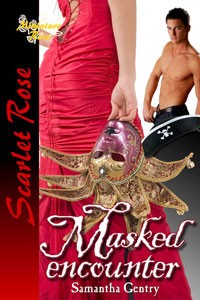Sunday, November 28, 2010
Lame Remakes Of Great Television Shows
As is blatantly obvious, television quite often looks to the past when searching for new series ideas. This situation occurs for two different reasons.
1) The network has a current hit and wants to capitalize on that popularity by creating a spinoff.
Spinoffs have long been a popular and successful (for the most part) tactic for the networks. Some shows have been so finely crafted that they were the genesis of several spinoffs. For example, ALL IN THE FAMILY gave us THE JEFFERSONS, MAUDE, and GOOD TIMES. THE MARY TYLER MOORE SHOW gave us LOU GRANT, RHODA, and PHYLLIS. And we can't overlook the entire LAW AND ORDER franchise with the most recent being LAW AND ORDER LOS ANGELES and the highly successful CSI franchise. And, of course, JAG begat NCIS which begat NCIS LOS ANGELES
2) The network is looking for a ratings boost so it turns to hit series from the past and hopes that reviving them will be a ratings winner.
And in that department they have come up with some significant blunders when trying to capture that elusive lightning in the bottle for the second time. Far more remakes have been total disasters rather than a once again successful television series.
One remake that seems to be paying off for the network and one I'm enjoying is HAWAII 5-0. They've updated the characters and given them more interesting backgrounds and interactions than the original but they were smart enough to keep the original theme song and the style of the opening main titles. A good mix of the old and comfortable along with the new.
But let's take a look at some remakes that just didn't work at all.
DRAGNET (2003): Law and Order kingpin, Dick Wolf, tried to bring back Jack Webb's classic cop drama. It wasn't a bad idea. The original Jack Webb series had a very specific style that was totally Jack Webb's vision right down to the almost wooden dialogue. "Just the facts, Ma'am." It was an iconic style everyone knew. The remake, however, fell victim to the decision by committee mentality of constant tinkering by TV executives and it became a jumble of needless characters.
THE TWILIGHT ZONE (2002): An attempt by UPN to remake one of the most creative and interesting series on television was a colossal failure. Without the guiding hand and creative genius of Rod Serling, including his iconic physical presence as the host introducing each episode, it was a dismal failure. They even went so far as to replace those great musical notes that made up the theme song with an updated version. All you need to hear is "do do do do" for the first eight notes and the theme song is not only recognized but its message is clear.
GET SMART (1995): Fox brought back the classic spy spoof comedy originally created by Mel Brooks and Buck Henry. And they brought it back with the original cast and it still failed. This remake picked up where the original left off with Maxwell Smart bumbling his way to the top of Control as the chief. But instead of letting Don Adams continue with the role that made him famous, the secret agent work was handled by his nerdy son which made the whole series feel like a lukewarm second rate attempt.
THE PRISONER (2009): The original classic British series starred Patrick McGoohan as Number six in The Village…a place that seemed to shift and change before our eyes and before the eyes of the main character so that not believing what you're seeing and hearing was the only rule that seemed to be true. The original had a subtext that said it never really took itself seriously. The remake had a bigger budget, larger cast, and better production values but somewhere in there it lost the feeling of the original.
THE FUGITIVE (2000): CBS thought they could not only cash in on the highly successful original series, but also the hit movie starring Harrison Ford. But with a series and also a movie, everything about THE FUGITIVE was known. Who the characters were, their motives, and even the outcome. They didn't try to reinvent the wheel, they pretty much exactly copied it. No surprises, no edge of the seat action, nothing to hold the audience's interest.
FAWLTY TOWERS (every remake ever attempted): Don't screw around with perfection! There were only twelve episodes made of John Cleese's FAWLTY TOWERS and each one was the epitome of what a sitcom should be—brilliant writing, marvelous characters brought to life by an excellent cast. There have been so many attempts to capture the success of this British sitcom with one remake after another in several countries. Even here in the U.S. we gave it three attempts before finally realizing that it can't be done.
With successful American translations of British sitcoms (All In The Family from the British Till Death Do Us Part, Sanford And Son from the British Steptoe And Son, and Three's Company from the British Man About The House), we obviously thought we could strike gold again. The first one starred Harvey Korman and Betty White and never got beyond the pilot stage. The second one tried a switch by putting Bea Author in a female Basil Fawlty role and it was cancelled after one season. The third attempt starred John Larroquette in a show that copied the original plots but not the characters. Another failure. The original FAWLTY TOWERS was done in the late 1970s and is as funny today as it was then. I have the twelve episodes on DVD and each time I see them I break up even though I know what's coming.
Are there any television remakes that you found particularly disappointing?
Sunday, November 21, 2010
Those Naughty Pilgrims
Thanksgiving is this week. Time to turn our thoughts to turkey and dressing, cranberries, and pumpkin pie. The holiday also conjurs up images of the pilgrims at the dinner table looking all prim and proper. But what about those pious pilgrims? As with so much in life, there's the façade and then there's the reality. :)
They certainly have a reputation for being a rigid and humorless group. But there are a few surprises to be found. Even though drunkenness was discouraged, beer was accepted as a drink by men, women, and children. The daily ration on the Mayflower was a gallon a day for each individual. Even sex was not taboo under the right circumstances. They had a matter-of-fact attitude about sex as long as it was between a married couple. It's when sex strayed from being the exclusive right between a married couple that the stories get interesting.
Studies by a group of anthropologists at the University of Virginia found that the pilgrims spent a great deal of time thinking about how to punish those with impure thoughts and actions. Studies also discovered that in 11 percent of the marriages at Plymouth Colony the bride was already pregnant. The same study estimates that as many as 50 percent of the pilgrims engaged in premarital sex. Definitely not an image that fits the staid pilgrims.
According to the Mayflower Compact, the colony was to establish laws based on Biblical teachings "for the glory of God and the advancement of the Christian faith." The Old Testament book of Leviticus was the basis for most of their laws. Adultery? Death. A man has sex with his daughter-in-law? Death. Sodomy? Death. Bestiality? Death. Are you beginning to see a pattern? :)
But interestingly, the pilgrims did not typically enforce the death penalty for sex offenses. There was only one case in which the convicted offender was actually put to death for sex crimes. It was the case of Thomas Graunger, a teenage boy apparently at the peak of his raging hormones who sought satisfaction from any and all sources available to him…the farm animals.
According to Plymouth Governor William Bradford, "He was this year detected of buggery, and indicted for the same, with a mare, a cow, two goats, five sheep, two calves and a turkey."
Even though Thomas was the only one executed for a sex crime, punishments were routinely severe even with far lesser sex crimes and usually meant whippings, being put into the stocks, and fines.
Although not liberal in their thinking or lifestyle, the pilgrims were not as uptight as history would have us believe. They tried to create a strict religious society, but had an understanding and mercy unusual for their time. As time passed, intolerance grew and was reflected in their laws as demonstrated by the notorious Salem witch trials.
Men were not the only offenders in Plymouth colony. The prim women weren't always so pious either. Women were often caught with the evidence of their dalliances: babies. The records of the times are filled with one out-of-wedlock child after another. Babies showing up just a few months after marriage were also evidence of wrong doing. Pre-marital sex was severely punished. Fines were levied even for making passes, for appearing to have a "lascivious carriage" in public, or partying in mixed company at an unseemly time of night.
Sex outside marriage, even between two unmarried consenting adults, usually meant a whipping and fines. If the woman became pregnant, the man had to either marry her or pay for the child's upbringing. The man was usually placed in the stocks and whipped while the woman was made to watch. Sometimes mercy was granted as in the case of a servant, Jane Powell. Following years of hard servitude, she was destitute and had agreed to having sex in the hopes of marrying the man. Apparently the court found her plea convincing and she went unpunished.
Even though the pilgrims imposed strict punishment for crimes, they also understood human temptations. In 1656, Katheren Aines and William Paule were sentenced for committing adultery. William was whipped and forced to pay the costs of his imprisonment. Katheren was whipped, imprisoned and forced to wear a letter on her shoulder designating her as an adulteress. (Calling Nathaniel Hawthorne!) However, Katheren's husband, Alexander, was also punished. Alexander had left his family for some time and treated her badly during their marriage. The pilgrims viewed him as guilty of "exposing his wife to such temptations." Alexander was required to pay for his wife's imprisonment, and sit in the stocks while William and Katheren were whipped.
This Thanksgiving as you sit down to your turkey dinner, it might be a good idea to take a moment to be thankful you aren't a pilgrim. :)
They certainly have a reputation for being a rigid and humorless group. But there are a few surprises to be found. Even though drunkenness was discouraged, beer was accepted as a drink by men, women, and children. The daily ration on the Mayflower was a gallon a day for each individual. Even sex was not taboo under the right circumstances. They had a matter-of-fact attitude about sex as long as it was between a married couple. It's when sex strayed from being the exclusive right between a married couple that the stories get interesting.
Studies by a group of anthropologists at the University of Virginia found that the pilgrims spent a great deal of time thinking about how to punish those with impure thoughts and actions. Studies also discovered that in 11 percent of the marriages at Plymouth Colony the bride was already pregnant. The same study estimates that as many as 50 percent of the pilgrims engaged in premarital sex. Definitely not an image that fits the staid pilgrims.
According to the Mayflower Compact, the colony was to establish laws based on Biblical teachings "for the glory of God and the advancement of the Christian faith." The Old Testament book of Leviticus was the basis for most of their laws. Adultery? Death. A man has sex with his daughter-in-law? Death. Sodomy? Death. Bestiality? Death. Are you beginning to see a pattern? :)
But interestingly, the pilgrims did not typically enforce the death penalty for sex offenses. There was only one case in which the convicted offender was actually put to death for sex crimes. It was the case of Thomas Graunger, a teenage boy apparently at the peak of his raging hormones who sought satisfaction from any and all sources available to him…the farm animals.
According to Plymouth Governor William Bradford, "He was this year detected of buggery, and indicted for the same, with a mare, a cow, two goats, five sheep, two calves and a turkey."
Even though Thomas was the only one executed for a sex crime, punishments were routinely severe even with far lesser sex crimes and usually meant whippings, being put into the stocks, and fines.
Although not liberal in their thinking or lifestyle, the pilgrims were not as uptight as history would have us believe. They tried to create a strict religious society, but had an understanding and mercy unusual for their time. As time passed, intolerance grew and was reflected in their laws as demonstrated by the notorious Salem witch trials.
Men were not the only offenders in Plymouth colony. The prim women weren't always so pious either. Women were often caught with the evidence of their dalliances: babies. The records of the times are filled with one out-of-wedlock child after another. Babies showing up just a few months after marriage were also evidence of wrong doing. Pre-marital sex was severely punished. Fines were levied even for making passes, for appearing to have a "lascivious carriage" in public, or partying in mixed company at an unseemly time of night.
Sex outside marriage, even between two unmarried consenting adults, usually meant a whipping and fines. If the woman became pregnant, the man had to either marry her or pay for the child's upbringing. The man was usually placed in the stocks and whipped while the woman was made to watch. Sometimes mercy was granted as in the case of a servant, Jane Powell. Following years of hard servitude, she was destitute and had agreed to having sex in the hopes of marrying the man. Apparently the court found her plea convincing and she went unpunished.
Even though the pilgrims imposed strict punishment for crimes, they also understood human temptations. In 1656, Katheren Aines and William Paule were sentenced for committing adultery. William was whipped and forced to pay the costs of his imprisonment. Katheren was whipped, imprisoned and forced to wear a letter on her shoulder designating her as an adulteress. (Calling Nathaniel Hawthorne!) However, Katheren's husband, Alexander, was also punished. Alexander had left his family for some time and treated her badly during their marriage. The pilgrims viewed him as guilty of "exposing his wife to such temptations." Alexander was required to pay for his wife's imprisonment, and sit in the stocks while William and Katheren were whipped.
This Thanksgiving as you sit down to your turkey dinner, it might be a good idea to take a moment to be thankful you aren't a pilgrim. :)
Sunday, November 14, 2010
Eagle Vs. Turkey: America's National Symbol
We all know that the bald eagle is America's National Symbol…a proud and majestic bird. And turkey is what we serve every year at Thanksgiving…a tasty bird made all the more appetizing when accompanied by dressing, mashed potatoes and gravy.
But did you know if Benjamin Franklin had gotten his way, the turkey would have been our national symbol?
In 1776, right after the signing of the Declaration of Independence, the Continental Congress appointed a special committee to select a design for an official national seal. This committee consisted of Thomas Jefferson, John Adams, and Benjamin Franklin. They each had their own ideas, none of which included the bald eagle. They finally came to agreement on a drawing of a woman holding a shield to represent the states. However, the design did nothing to inspire the members of Congress.
So Congress consulted a Philadelphia artist named William Barton who created a new design that included a golden eagle. At the time we were still at war with England and the fierce looking bird was deemed an appropriate symbol…with one small change. The golden eagle also flew over Europe so the federal lawmakers declared that the bird in the seal had to be an American bald eagle.
On June 20, 1782, they approved the design that we recognize today.
From the start, the eagle had been a controversial choice. Benjamin Franklin was quite vocal in his objection to the selection of the eagle. He considered it a bird of "bad moral character." A year after the Treaty of Paris officially ended the war with Great Britain, Franklin argued that the turkey would have been a more appropriate symbol. "A much more respected bird and a true native of America."
Unfortunately for Franklin, Congress was not convinced and the bald eagle remained our national symbol.
Whereas both the bald eagle and the turkey are native to America, we can't lay exclusive claim to either species since both were traditionally found in Canada and Mexico as well as the U.S.
And all of this leads us to one important question. If the turkey had been chosen as our national symbol, what would we serve as our traditional Thanksgiving dinner?
Sunday, November 7, 2010
How To Be A Supervillain: Six Tips For Ruling The World
This trying to take over the world business isn't as easy as it seems. Even with legions of henchmen and all kinds of super toys available to you, there's always some superhero out there to thwart your plans just when you're on the verge of success.
If world domination is your goal, here's a list of the top six essentials you'll need for a career as a supervillain.
Persian Cat (or equally sinister animal adornment)
Why It's Necessary: A supervillain needs to be holding the cat when he makes his grand entrance. The Persian breed says you're wealthy and that mankind's most aloof creature is no match for your icy resolve.
Who Did It Best: Ernst Stavro Blofeld, possibly James Bond's greatest enemy, was the trendsetter for many supervillain staples.
Bald Head
Why It's Necessary: Any supervillain worthy of the name has a spectacular chrome dome holding his genius brain.
Who Did It Best: Lex Luthor immediately leaps to mind.
Minions
Why It's Essential: The truth about supervillains can be summed up as why have dogs around you if you're going to end up doing your own barking. The true supervillain is too busy creating super plots to take over the world to have time for the minor interruptions such as kidnapping enemies and making Starbucks runs.
Who Did It Best: Emperor Palpatine and Darth Vader had an army of Stormtroopers to send after the Rebel Alliance. Of course, that didn't help them win in the end.
Inventive Death Traps
Why It's Essential: A supervillain can't simply kill his adversary, he has to come up with an ingenious method of doing away with him that offers maximum dramatic impact. Of course, the downside of this is that it gives the hero ample opportunity to escape.
Who Did It Best: From Blofeld's piranha pool to all the torturous devices Indiana Jones encountered, there are just too many to try to pick only one.
Secret Hideaway
Why It's Essential: In order to have a dramatic showdown you need to have a suitably impressive backdrop and a secret hideaway is just the place.
Who Did It Best: Austin Powers' nemesis, Dr. Evil may have been inept in many areas, but he definitely had an eye for impressive lairs.
Evil Plan
Why It's Essential: Anyone with a genius IQ can built a super weapon and rain havoc on the population. However, a true supervillain has to do more than just destroy stuff. He needs an evil plan to justify all the destruction and there needs to be something for the hero to thwart.
Who Did It Best: The history of villainy give us a wealth of truly moronic evil plans. But for a scheme we can all believe in, we need to look at Magneto, the metal-molding mutant from X-Men. He can show us how an evil plan is done.
Who are your favorite supervillains?
Subscribe to:
Posts (Atom)
































